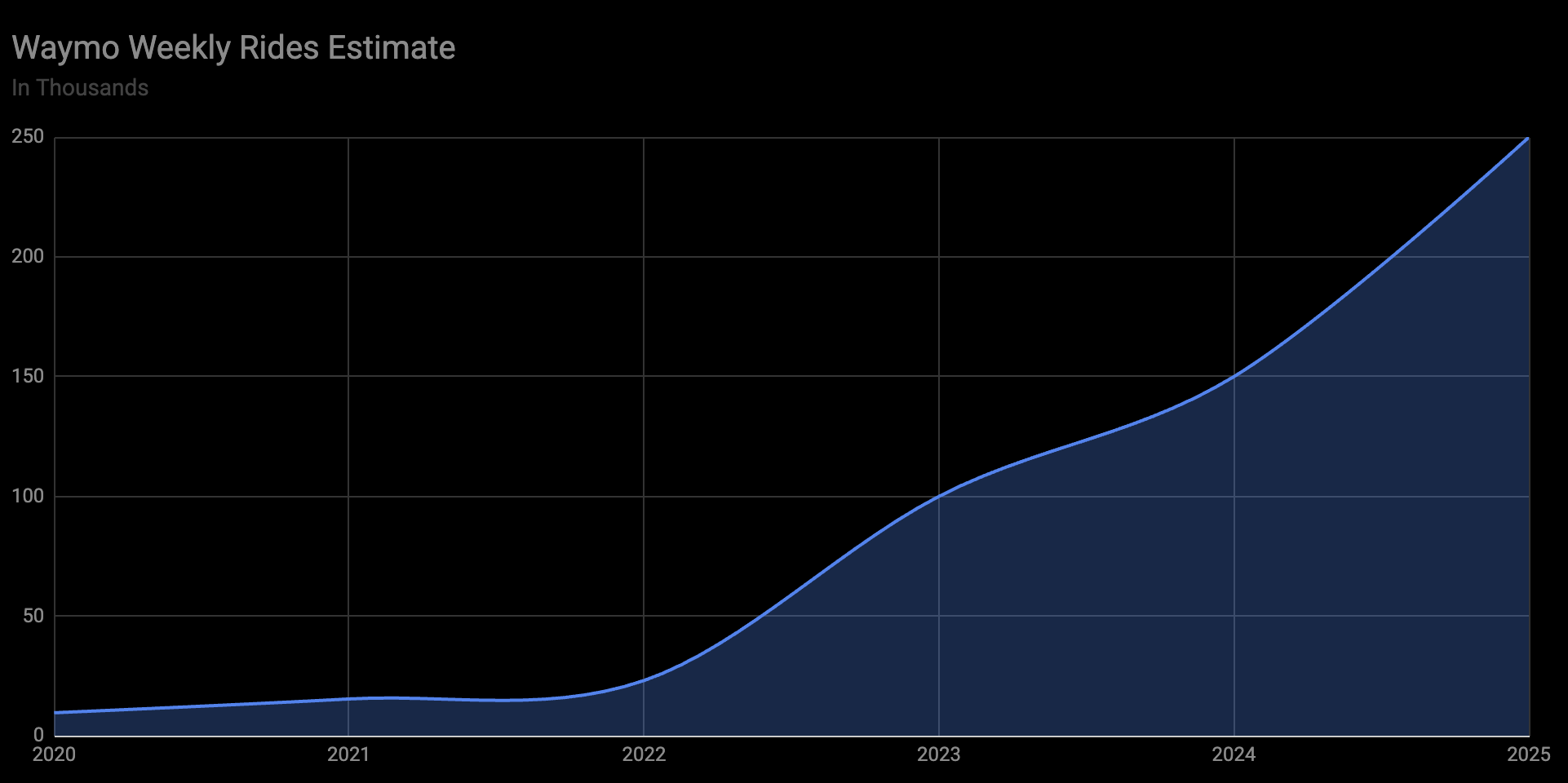The Road to Autonomy: Tesla, Waymo, Uber, and the Future of Autonomous Driving
- Sia Gholami
- /
- Apr 27, 2025

The autonomous driving sector is accelerating rapidly, highlighted by recent announcements from Tesla, Waymo (Alphabet’s self-driving unit), and Uber. In Tesla’s Q1 2025 earnings call, the company revealed plans to launch a supervised robotaxi service in Austin, Texas, starting June, utilizing 10–20 modified Model Y vehicles equipped with its latest Full Self-Driving (FSD) software. These vehicles have already completed over 1,500 supervised trips covering approximately 15,000 miles. CEO Elon Musk reiterated that autonomous services are expected to contribute to Tesla’s revenue stream by mid-to-late 2026. Meanwhile, Waymo reported a fivefold increase in paid autonomous rides, now surpassing 250,000 trips weekly across San Francisco, Phoenix, Los Angeles, and Austin. Separately, Uber emphasized in its earnings report that it intends to position itself as the premier platform for autonomous driving services, integrating rides from both autonomous fleets (such as Waymo vehicles) and human drivers, allowing flexible supply scaling depending on demand and technological readiness.
Today, the operational state of autonomous driving is still limited but growing. Approximately 33,570 autonomous vehicles are active globally in 2025, a notable increase from 26,560 units in 2024. Waymo currently operates over 700 fully autonomous vehicles, with San Francisco alone hosting more than 300 units operating without a human driver. Tesla’s supervised FSD trials are active in several U.S. cities including New York, Phoenix, Seattle, and Atlanta, with plans for rapid expansion by year-end. Uber has begun integrating autonomous rides from third-party providers in select markets, starting with limited deployments in Phoenix and Los Angeles. Although Level 4 autonomy (vehicles operating without human intervention under specific conditions) is being piloted, Level 5 (full autonomy in all environments) remains elusive.
Autonomous driving is projected to evolve through a phased architecture. Waymo plans to expand to Atlanta, Miami, and Washington, D.C., by 2026, using a layered sensor fusion approach that combines LiDAR, radar, and computer vision systems for environmental perception. Tesla, by contrast, continues to pursue vision-only autonomy with heavy reliance on neural networks for end-to-end driving decision-making. Tesla’s robotaxi network is intended to scale across the U.S., Mexico, and Canada, including eventual participation of privately owned Teslas in the shared fleet. Uber’s strategy is to operate as a neutral platform that aggregates rides from multiple autonomous vehicle operators, dynamically allocating rides between human drivers and AVs based on real-time supply, local regulatory environments, and technical capabilities.
The road ahead is filled with both opportunities and risks. On the opportunity side, autonomous systems promise significant societal gains: reduced accident rates, more efficient traffic flows, and increased mobility for underserved demographics. Economically, the autonomous shuttle bus market alone is forecasted to reach $10.4 billion by 2031, with broader autonomous ride-hailing revenues projected even higher. However, risks persist, including questions about the robustness of perception algorithms in edge cases, cybersecurity vulnerabilities, regulatory fragmentation across jurisdictions, and public acceptance of autonomous systems. Technical debates continue as well; Tesla’s camera-only system is seen by some experts as less resilient in adverse weather compared to sensor-fusion systems used by Waymo and Cruise. Uber’s hybrid model, although flexible, introduces operational complexity around rider experience consistency between human-driven and autonomous rides.
Autonomous driving is approaching a critical mass of deployment, with Tesla, Waymo, and Uber each pursuing distinct but overlapping visions for the future of mobility. Technical sophistication, regulatory alignment, and public trust will dictate how quickly and successfully these ambitions materialize. The next few years will be pivotal in determining whether autonomous vehicles move from limited deployments to becoming a foundational element of transportation ecosystems globally.
About The Author

Sia Gholami
Sia Gholami is a distinguished expert in the intersection of
artificial intelligence and finance. He holds a bachelor's, master's, and Ph.D. in computer
science, with his doctoral thesis focused on efficient large language models and their
applications—an area crucial to the development of advanced AI systems. Specializing in machine
learning and artificial intelligence, Sia has authored several research papers published in
peer-reviewed venues, establishing his authority in both academic and professional circles.
Sia has created AI models and systems specifically designed to identify opportunities in the
public market, leveraging his expertise to develop cutting-edge financial technologies. His most
recent role was at Amazon, where he worked within Amazon Ads, developing and deploying AI and
machine learning models to production with remarkable success. This experience, combined with
his deep technical knowledge and understanding of financial systems, positions Sia as a leading
figure in AI-driven financial technologies. His extensive background has also led him to found
and lead successful ventures, driving innovation at the convergence of AI and finance.